Contact lens
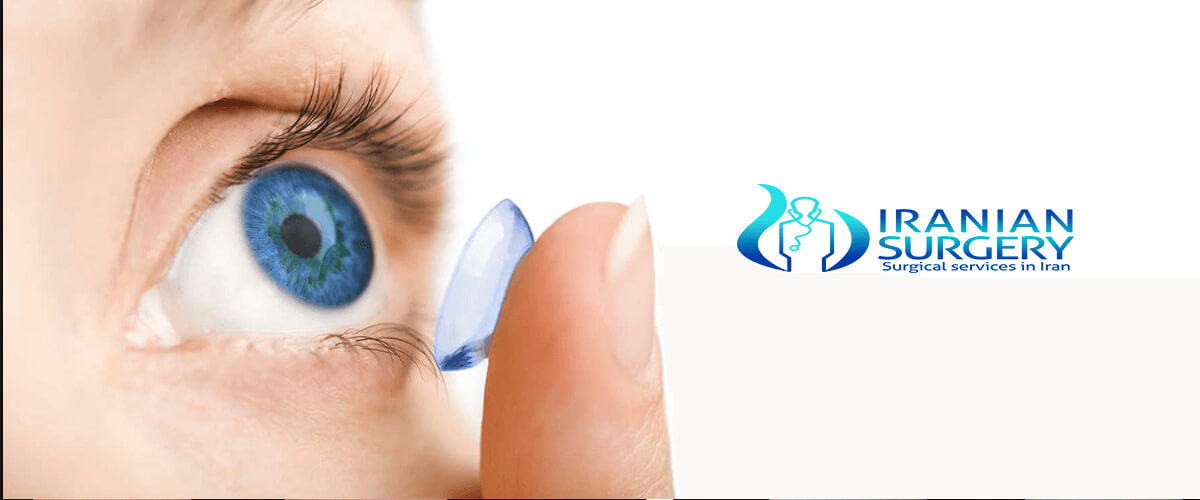
Contact lens
A contact lens, or simply contact, is a thin lens placed directly on the surface of the eye. Contact lenses are considered medical devices and can be worn to correct vision, or for cosmetic or therapeutic reasons. In 2004, it was estimated that 125 million people worldwide use contact lenses, including 28 to 38 million in the United States.In 2010, the worldwide market for contact lenses was estimated at $6.1 billion, while the US soft lens market was estimated at $2.1 billion. Multiple analysts estimated that the global market for contact lenses would reach $11.7 billion by 2015. As of 2010, the average age of contact lens wearers globally was 31 years old, and two-thirds of wearers were female.
People choose to wear contact lenses for many reasons. Aesthetics and cosmetics are the main motivating factors for people who want to avoid wearing glasses or to change the appearance of their eyes. Others wear contact lenses for functional or optical reasons. When compared with spectacles, contact lenses typically provide better peripheral vision, and do not collect moisture (from rain, snow, condensation etc.) or perspiration. This can make them preferable for sports and other outdoor activities. Contact lens wearers can also wear sunglasses, goggles, or other eyewear of their choice without having to fit them with prescription lenses or worry about compatibility with glasses. Additionally, there are conditions such as keratoconus and aniseikonia that are typically corrected better with contact lenses than with glasses.
The size of the contact lens market is likely to grow due to the increasing occurrence of eye-related conditions such as astigmatism, hyperopia and myopia. The other drivers are increasing population, the desire to make fashion statements, and technological advancement. By the end of 2020, the value of the contact lens market is predicted to reach $13.5 billion.
Types
Contact lenses are classified in many different ways: by their primary function, material, wear schedule (how long a lens can be worn), and replacement schedule (how long before a lens needs to be discarded).
Functions
Corrective contact lenses
Corrective contact lenses are designed to improve vision, most commonly by correcting refractive error. This is done by directly focusing light so it enters the eye with the proper power for clear vision.
A spherical contact lens bends light evenly in every direction (horizontally, vertically, etc.). They are typically used to correct myopia and hypermetropia. A toric contact lens has a different focusing power horizontally than vertically, and as a result can correct for astigmatism. Some spherical rigid lenses can also correct for astigmatism. Because a toric lens must have the proper orientation to correct for a person’s astigmatism, such a lens must have additional design characteristics to prevent it from rotating away from the ideal alignment. This can be done by weighting the bottom of the lens or by using other physical characteristics to rotate the lens back into position. Some toric contact lenses have marks or etchings that can assist the eye doctor or the user in fitting the lens. The first disposable toric contact lenses were introduced in 2000 by Vistakon.
Correction of presbyopia (a need for a reading prescription different from the prescription needed for distance) presents an additional challenge in the fitting of contact lenses. Two main strategies exist: multifocal lenses and monovision.
Multifocal contact lenses (e.g. bifocals or progressives) are comparable to spectacles with bifocals or progressive lenses because they have multiple focal points. Multifocal contact lenses are typically designed for constant viewing through the center of the lens, but some designs do incorporate a shift in lens position to view through the reading power (similar to bifocal glasses).
Monovision is the use of single-vision lenses (one focal point per lens) to focus an eye (typically the dominant one) for distance vision and the other for near work. The brain then learns to use this setup to see clearly at all distances. A technique called modified monovision uses multifocal lenses and also specializes one eye for distance and the other for near, thus gaining the benefits of both systems. Care is advised for persons with a previous history of strabismus and those with significant phorias, who are at risk of eye misalignment under monovision. Studies have shown no adverse effect to driving performance in adapted monovision contact lens wearers.
Alternatively, a person may simply wear reading glasses over their distance contact lenses.
Other types of vision correction
For those with certain color deficiencies, a red-tinted “X-Chrom” contact lens may be used. Although such a lens does not restore normal color vision, it allows some color-blind people to distinguish colors better. Red-filtering contact lenses can also be an option for extreme light sensitivity in some visual deficiencies such as achromatopsia.
ChromaGen contact lenses have been used and shown to have some limitations with vision at night although otherwise producing significant improvements in color vision. An earlier study showed very significant improvements in color vision and patient satisfaction.
Later work that used these ChromaGen lenses with dyslexics in a randomised, double-blind, placebo controlled trial showed highly significant improvements in reading ability over reading without the lenses. This system has been granted FDA approval for use in the United States.
Magnification is another area being researched for future contact lens applications. Embedding of telescopic lenses and electronic components suggests that future uses of contact lenses may become extremely diverse.
Cosmetic contact lenses
A cosmetic contact lens is designed to change the appearance of the eye. These lenses may also correct refractive error. Although many brands of contact lenses are lightly tinted to make them easier to handle, cosmetic lenses worn to change eye color are far less common, accounting for only 3% of contact lens fits in 2004.
In the United States, the FDA labels non-corrective cosmetic contact lenses as decorative contact lenses. Like any contact lens, cosmetic lenses carry risks of mild to serious complications, including ocular redness, irritation and infection.
Due to their medical nature, colored contact lenses, similar to regular ones, are illegal to purchase in the United States without a valid prescription. Those with perfect vision can buy color contacts for cosmetic reasons, but they still need their eyes to be measured for a “plano” prescription, meaning one with zero vision correction. This is for safety reasons so the lenses will fit the eye without causing irritation or redness.
Some colored contact lenses completely cover the iris, thus dramatically changing eye colour. Other colored contact lenses merely tint the iris, highlighting its natural colour. A new trend in Japan, South Korea and China is the circle contact lens, which extend the appearance of the iris onto the sclera by having a dark tinted area all around. The result is an appearance of a bigger, wider iris, a look reminiscent of dolls’ eyes.
One of the drawbacks of cosmetic lenses is not knowing how they will look before physically trying them on. This has led to an industry where lens retailers are heavily influenced by cutting edge digital fashion technology, specifically the Virtual Dressing Room technology. Virtual Dressing Room technology offers users the option to upload a photo so they can virtually try on different lenses and experience how they will look before committing to a purchase. Examples of retailers that currently offer this technology are Freshlook Color Studios and Colorful Eyes.
Cosmetic lenses can have more direct medical applications. For example, some contact lenses can restore the appearance and, to some extent the function, of a damagedor missing iris.
Therapeutic scleral lenses
A scleral lens is a large, firm, transparent, oxygen-permeable contact lens that rests on the sclera and creates a tear-filled vault over the cornea. The cause of this unique positioning is usually relevant to a specific patient whose cornea is too sensitive to support the lens directly. Scleral lenses may be used to improve vision and reduce pain and light sensitivity for people suffering from disorders or injuries to the eye, such as severe dry eye syndrome (Kerotanconjuctivis sicca), microphthalmia, keratoconus, corneal ectasia, Stevens–Johnson syndrome, Sjögren’s syndrome, aniridia, neurotrophic keratitis (aneasthetic corneas), complications post-LASIK, high order Aberrations of the eye, complications post-corneal transplant and pellucid degeneration. Injuries to the eye such as surgical complications, distorted corneal implants, as well as chemical and burn injuries also may be treated with scleral lenses.
Therapeutic soft lenses
Soft lenses are often used in the treatment and management of non-refractive disorders of the eye. A bandage contact lens allows the patient to see while protecting an injured or diseased cornea from the constant rubbing of blinking eyelids, thereby allowing it to heal. They are used in the treatment of conditions including bullous keratopathy, dry eyes, corneal abrasions and erosion, keratitis, corneal edema, descemetocele, corneal ectasis, Mooren’s ulcer, anterior corneal dystrophy, and neurotrophic keratoconjunctivitis. Contact lenses that deliver drugs to the eye have also been developed.
Complications
Contact lenses are generally safe as long as they are used correctly. Complications from contact lens wear affect roughly 5% of wearers yearly. Factors leading to eye damage varies, and improper use of a contact lens may affect the eyelid, the conjunctiva, and, most of all, the whole structure of the cornea. Poor lens carecan lead to infections by various microorganisms including bacteria, fungi, and Acanthamoeba (Acanthamoeba keratitis).
Many complications arise when contact lenses are worn not as prescribed (improper wear schedule or lens replacement). Sleeping in lenses not designed or approved for extended wear is a common cause of complications. Many people go too long before replacing their contacts, wearing lenses designed for 1, 14, or 30 days of wear for multiple months or years. While this does save on the cost of lenses, it risks permanent damage to the eye and even loss of sight.
One of the major factors that causes complications is that the contact lens is an oxygen barrier. The cornea needs a constant supply of oxygen to remain completely transparent and function as it should; it normally gets that oxygen from the surrounding air while awake, and from the blood vessels in the back of the eyelid while asleep. The most prominent risks associated with long-term, chronic low oxygen to the cornea include corneal neovascularization, increased epithelial permeability, bacterial adherence, microcysts, corneal edema, endothelial polymegethism, dry eye and potential increase in myopia. That is why much of the research into the latest soft and rigid contact lens materials has centered on improving oxygen transmission through the lens.
Mishandling of contact lenses can also cause problems. Corneal abrasions can increase the chances of infection. When combined with improper cleaning and disinfection of the lens, a risk of infection further increases. Decreased corneal sensitivity after extended contact lens wear may cause a patient to miss some of the earliest symptoms of such complications.
The way contact lenses interact with the natural tear layer is a major factor in determining lens comfort and visual clarity. People suffering from dry eyes are particularly vulnerable to discomfort and episodes of brief blurry vision. Proper lens selection can minimize these effects.
Long-term wear (over five years) of contact lenses may “decrease the entire corneal thickness and increase the corneal curvature and surface irregularity.” Long-term wear of rigid contacts is associated with decreased corneal keratocyte density and increased number of epithelial Langerhans cells.
All contact lenses sold in the United States are studied and approved as safe by the FDA when specific handling and care procedures, wear schedules, and replacement schedules are followed.
Usage
Before touching the contact lens or the eye, it is important to wash hands thoroughly with soap and rinse well. Soaps containing moisturizers or allergens should be avoided as these can cause eye irritation.Drying of hands using towels or tissues before handling contact lenses can transfer lint (fluff) to the hands and, subsequently, to the lenses, causing irritation upon insertion. Towels, unless freshly laundered on high temperature wash, are frequently contaminated with large quantities of bacteria and, as such, should be avoided when handling lenses. Dust, lint and other debris may collect on the outside of contact lenses. Again, hand contact with this material, before handling contact lenses, may transfer it to the lenses themselves. Rinsing the case under a source of clean running water, before opening it, can help alleviate this problem. Next the lens should be removed from its case and inspected for defects (e.g. splits, folds, lint). A ‘gritty’ or rough appearance to the lens surface may indicate that a considerable quantity of proteins, lipids and debris has built up on it and that additional cleaning is required; this is often accompanied and felt by unusually high irritation upon insertion.
Make sure the soft lens is not inserted inside-out. Edge of a lens turned inside out has a different appearance, especially when the lens is slightly folded. Insertion of an inside-out lens for a brief time (less than one minute) should not cause any damage to the eye. Some brands of lenses have markings (e.g. numbers) on the rim that make it easier to tell the front of the lens from the back.
The technique for removing or inserting a contact lens varies depending upon whether the lens is soft or rigid. There are many subtle variations to insertion and removal techniques. Because of differences in anatomy, manual dexterity, and visual limitations, every person must find the technique that works best for them. In all cases, the insertion and removal of lenses requires some training and practice on part of the user.
Insertion
Contact lenses are typically inserted into the eye by placing them on the pad of the index or middle finger with the concave side upward and then using that finger to place the lens on the eye. Rigid lenses should be placed directly on the cornea. Soft lenses may be placed on the sclera (white of the eye) and then slid into place. Another finger of the same hand, or a finger of the other hand, is used to keep the eye wide open. Alternatively, the user may close their eyes and then look towards their nose, sliding the lens into place over the cornea. Problems may arise if the lens folds, turns inside-out, slides off the finger prematurely, or adheres more tightly to the finger than the eye surface. A drop of solution may help the lens adhere to the eye.
When the lens first contacts the eye, it should be comfortable. By making sure that particular attention is given to the eyelid margins for the presence of inflammation and signs of debris in the lashes, wearing contact lenses should be easy. A brief period of irritation may occur, caused by a difference in pH and/or salinity between that of the lens solution and the tear. This discomfort fades quickly as the solution drains away and is replaced by the natural tears. However, if irritation persists, the cause could be a dirty, damaged, or inside-out lens. Removing and inspecting it for damage and proper orientation, and re-cleaning if necessary, should correct the problem. If discomfort continues, the lens should not be worn. In some cases, taking a break from lens wear for a day may correct the problem. In case of severe discomfort, or if it does not resolve by the next day, the person should be seen as soon as possible by an eye doctor to rule out potentially serious complications.
Removal
Removing contact lenses incorrectly can result in damage to the lens and injury to the eye, so certain precautions must be taken. Rigid contact lenses can best be removed by pulling the eyelid tight and then blinking, whereupon the lens drops out. With one finger on the outer corner of the eyelids, or lateral canthus, the person stretches the eyelids towards the ear; the increased tension of the eyelid margins against the edge of lens allows the blink to break the capillary action that adheres the lens to the eye. The other hand is typically cupped underneath the eye to catch the lens as it drops out. For soft lenses, which have a stronger adherence to the eye surface, this technique is less suitable.
A soft contact lens may be removed by pinching the edge between the thumb and index finger. Moving the lens off the cornea first can improve comfort during removal and reduce risk of scratching the cornea with a fingernail. It is also possible to push or pull a soft lens far enough to the side or bottom of the eyeball to get it to fold then fall out, without pinching and thereby damaging it. If these techniques are used with a rigid lens, it may scratch the cornea.
There are also small tools specifically for removing lenses. Usually made of flexible plastic, they resemble small tweezers, or plungers that suction onto the front of the lens. Typically, these tools are used only with rigid lenses. Extreme care must be exercised when using mechanical tools or fingernails to insert or remove contact lenses.
Care
Lens care varies depending on material and wear schedule. Daily disposables are discarded after a single use and thus require no cleaning. Other lenses need regular cleaning and disinfecting to prevent surface coating and infections.
There are many ways to clean and care for contact lenses, typically called care systems or lens solutions:
- Multipurpose solutions
-
- Multipurpose solutions are the most common method for rinsing, disinfecting, cleaning, and storing soft lenses. In 2002, concerns were raised that multipurpose solutions are not effective at disinfecting Acanthamoeba from the lens. In May 2007, one brand of multipurpose solution was recalled due to a cluster of Acanthamoeba infections. Since then, studies showed that multipurpose solutions are ineffective against Acanthamoebae. The latest multipurpose solutions also contain ingredients that improve the surface wetability and comfort of silicone hydrogel lenses.
- Hydrogen peroxide systems
-
- Hydrogen peroxide can be used to disinfect contact lenses. Care should be taken not to get hydrogen peroxide in the eye because it is very painful and irritating. With “two-step” products, the hydrogen peroxide must be rinsed away with saline before the lenses may be worn. “One-step” systems allow the hydrogen peroxide to react completely, becoming pure water. Thus “one-step” hydrogen peroxide systems do not require the lenses to be rinsed before insertion, provided the solution has been given enough time to react. An exposure time of 2-3 hours to 3% H
2O
2 (non neutralized solution) is sufficient to kill bacteria, HIV, fungi, and Acanthamoeba. This can be achieved by using a “two-step” product or a “one-step” tablet system if the catalytic tablet isn’t added before 2-3 hours. However, the “one-step” catalytic disk systems are not effective against Acanthamoeba.
- Hydrogen peroxide can be used to disinfect contact lenses. Care should be taken not to get hydrogen peroxide in the eye because it is very painful and irritating. With “two-step” products, the hydrogen peroxide must be rinsed away with saline before the lenses may be worn. “One-step” systems allow the hydrogen peroxide to react completely, becoming pure water. Thus “one-step” hydrogen peroxide systems do not require the lenses to be rinsed before insertion, provided the solution has been given enough time to react. An exposure time of 2-3 hours to 3% H
- Enzymatic cleaner – Used for cleaning protein deposits off lenses, usually weekly, if the daily cleaner is not sufficient. Typically, this cleaner is in tablet form.
- Ultraviolet, vibration, or ultrasonic devices – Used to both disinfect and clean CLs. The lenses are inserted inside the portable device (running on batteries and/or plug-in) for 2 to 6 minutes during which both the microorganisms and protein build-up are thoroughly cleaned. These devices are not usually available in optic retailers but are in other stores.
- Saline solution
-
- Sterile saline is used for rinsing the lens after cleaning and preparing it for insertion. Saline solutions do not disinfect, so it must be used in conjunction with some type of disinfection system. One advantage to saline is that it cannot cause an allergic response, so it is well suited for individuals with sensitive eyes or strong allergies.
- Daily cleaner
-
- Used to clean lenses on a daily basis. A few drops of cleaner are applied to the lens while it rests in the palm of the hand; the lens is rubbed for about 20 seconds with a clean fingertip (depending on the product) on each side. Lens must then be rinsed. This system is commonly used to care for rigid lenses.
Aside from cleaning the contact lenses, it is highly advised to also clean the cases to avoid any possible infection. Replacing the case monthly, and storing it in a clean and safe environment is also recommended.
Contact lenses can be mechanically cleaned of more substantial protein, lipid and debris build up by rubbing them between the clean pad of a finger and the palm of a hand, using a small amount of cleaning fluid as a lubricant. However, this method does not sterilize the lenses and so should be performed only before a full sterilization cycle (e.g. when putting the contact lens away at night).
Some products must be used only with certain types of contact lenses. Water alone will not at all disinfect the lens, and can lead to lens contamination causing potentially irreparable harm to the eye.
Contact lens solutions often contain preservatives such as benzalkonium chloride and benzyl alcohol. Preservative-free products usually have shorter shelf lives, but are better suited for individuals with an allergy or sensitivity to a preservative. In the past, thiomersal was used as a preservative. In 1989, thiomersal was responsible for about 10% of problems related to contact lenses. As a result, most products no longer contain thiomersal.
[kkstarratings]
SOURCE:


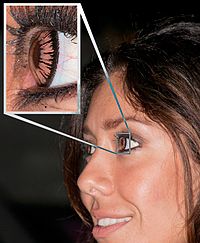
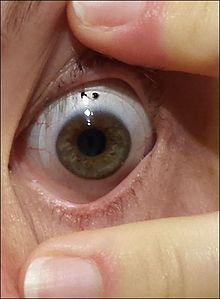

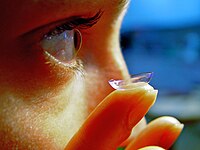

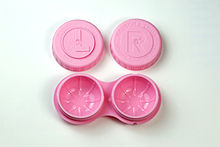
2 Comments
Hello,
This is Melaida and I am a certified photographer.
I was surprised, putting it lightly, when I found my images at your website. If you use a copyrighted image without an owner’s consent, you need to be aware that you could be sued by the creator.
It’s illegitimate to use stolen images and it’s so wicked!
Check out this document with the links to my images you used at iraniansurgery.com and my earlier publications to obtain the evidence of my legal copyrights.
Download it now and check this out for yourself:
https://sites.google.com/view/id000067839100/google/drive/file/downloads/storage?FileID=663585044836319082
If you don’t delete the images mentioned in the document above within the next couple of days, I’ll file a complaint on you to your hosting provider stating that my copyrights have been severely infringed and I am trying to protect my intellectual property.
And if it is not enough, for damn sure I am going to report and sue you! And you won’t receive the second notice from me.
Hello dear Mel, sorry to hear that, I sent your message to our content department, they will delete your images very soon.